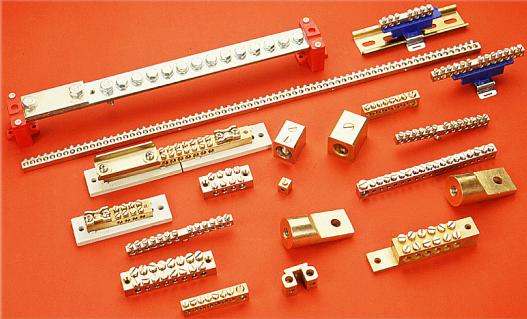Earthing the System Neutral
Most earthed systems employ some method of earthing the system neutral at one or more points.
Effectively Earthed System
A system is effectively earthed when the impedance between system neutral and the earth is low enough to restrict the phase to earth voltages on the healthy phases during a phase-earth fault to not greater than 80% of normal line voltage.
A system is considered to be effectively earthed when for all portions of the network of concern, the following reactance and resistance conditions apply:
0 < X0/X1 < 3
and
0 < R0/X1 < 1
where X0, R0 are the respective zero sequence reactance and zero sequence resistance of the network, and X1 is the positive sequence reactance at the same point.
Transformer neutrals may be solidly earthed, but due to excess zero sequence impedance caused by low transformer capacity or transformer installations with neutral earth points too sparsely located, the system may still become non-
effectively earthed.
The characteristics of solidly earthed and effectively earthed systems are outlined in Section 3. They minimise transient over-voltages and voltage rise on the healthy phases during phase-earth faults.
The purpose of an earth in a power system is to control the level of voltage rise in the network and to enable faults that do occur to be quickly identified and isolated.
Solidly Earthed System
Characteristics of the solidly earthed system are:
- High single phase to earth fault current.
- Good earth fault relaying.
- Minimisation of transient over-voltages.
- Voltage rise on healthy phases during a phase to ground fault is minimised.
- Cheapest form of earthing, minimal maintenance.
The high single phase fault currents is a major contributing factor in causing EPR and the interference with telecom circuits. Generally overhead reticulation has no earth return conductor and so the fault currents use the earth as a return path.
High return current does mean that there is ample current to operate protection relays and also assists protection discrimination. The magnitude of the fault current can also cause considerable damage at the point of fault, which may assist fault location. High fault currents may, however, also result in greater damage to power system equipment such as imperfectly made connections.
Where cable sheaths form part of the earth return path they must be rated to withstand the high fault current.
In recognizing the high levels of earth fault currents, some overseas power authorities that have traditionally used solid earthing have adopted impedance earthing.
Each method, as named, refers to the nature of the external circuit from the system neutral to earth, rather than to the degree of earthing.
In each case the impedance of the generator or transformer, whose neutral is earthed, is in series with the external circuit. Thus a solidly earthed generator or transformer may not furnish effective earthing to the system. If the source impedance is of a high value, the transformer capacity may be too small in comparison with the size of the system to be able to stabilize the phase to earth voltage levels when earth faults occur.
Reactance-Earthed System
A system is regarded as being reactance earthed where the ratio of zero-sequence reactance X0 to positive sequence reactance X1 is greater than 3, but is less than the value necessary for resonant earthing.
This is generally considered to apply to systems where the X0/X1 ratio is between 3 and 10. This includes systems with solidly earthed neutrals and systems where reactors are connected between neutral and earth. The literature on system earthing advises that for reactance earthed systems, the X0/X1 ratio should be kept below about 10. This ensures transient over-voltages are not excessive. This is equivalent to keeping the ratio of single phase to three phase fault current above about 25%. With reactance earthed systems any phase to earth fault creates a greater shift in neutral point voltage and higher increase in healthy phase voltage than with an effectively earthed system. This requires equipment purchased for such a system to have a higher insulation level than that needed for an effectively earthed system.
Resonant-Earthed System
Resonant earthing (Peterson Coil) is a special case of reactance earthing in which the capacitive current is tuned or neutralized by a neutral reactor. Care must be taken to keep the Peterson Coil tuned to the system capacitance to minimise the development of transient over-voltages, because the combination of neutralizer reactance and line capacitance constitutes a parallel resonant circuit.
Resistance-Earthed System
In general, resistance earthed systems have lower earth fault currents than effectively earthed or reactance earthed systems. This is necessary to limit the power loss in the neutral earthing resistor. The low fault currents can be beneficial to earthing grids and earth connection designs, and as well lessen any interference effects with neighbouring communication systems.
To avoid any serious transient over-voltage problems, the value of neutral resistance should lie within the boundaries:
2X0 < R0 < Xc0
where Xc0 is the zero sequence capacitive charging reactance of the network (Xc0 can be calculated). The need to ensure satisfactory relay operation for earth faults may dictate use of a lower value of neutral resistance than indicated by the above boundary limits.
Unearthed System
The main advantage of an unearthed neutral system is its ability to sustain a single earth fault without interruption. The insulation of all equipment must be designed on the basis of full and continued neutral displacement. For HV systems this results in relatively high costs. Relaying is particularly poor and as well the system will be subject to high transient voltages such as caused by arcing earth faults.
